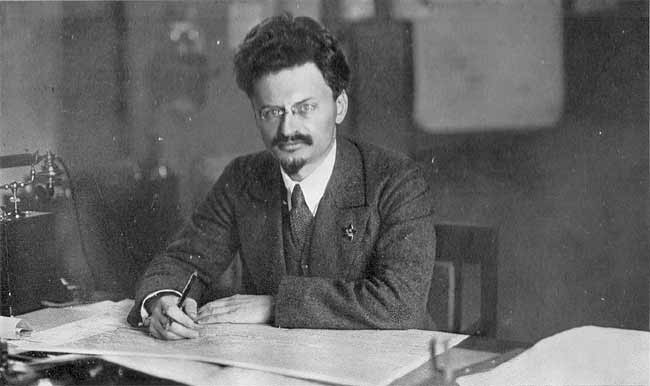The Russian Revolution in 1917 was, in part, started by a prominent Communist leader known as Leon Trotsky. Leon Trotsky, whose birth name is Lev Davidovich Bronstein, was born in Yanovka, Ukraine on November 7, 1879. Prior to his involvement with Lenin, his activities got him exiled to Siberia, several times. He fought alongside Vladimir Lenin and defeated those against Bolshevik control. When Joseph Stalin came into power, Trotsky struggled against him for control of the party; a battle he eventually lost. Trotsky was exiled again, and then eventually murdered in Mexico City.
Trotsky Coming into Power
Leon Trotsky was born to Jewish farmers, David and Anna Bronstein, and attended school in Odessa. In his final year of school, he became obsessed with Marxism, and in 1897 founded the South Russian Workers’ Union.
After forming this union, he was arrested within a year, tried and then exiled to Siberia where he met his first wife, Alexandra Lvovna. They had two daughters together. After two years, in 1902, Trotsky left his wife and two daughters, escaping exile to London. He met Lenin and joined the Socialist Democratic Party. At this time, Trotsky also remarried and had two sons.
Trotsky was initially supportive of the Menshevik Internationalists section of the Russian Social Democratic Labour Party. At first, he and Lenin were at odds, with Lenin supporting the Bolsheviks, however, Trotsky joined the Bolsheviks prior to the 1917 Revolution — fighting alongside Lenin. They founded the first Politburo together, set up to manage the Bolsheviks.
Trotsky was set up in the position of Commissar for Foreign Affairs. Post WWI, he was tasked with making peace with the Germans and reaching territory/reparation agreements. Trotsky believed that it would be wise to wait and see if the government would be defeated by the Allies, but Lenin had other plans. He wanted to make peace with Germany so they could concentrate on making their own Communist government. Trotsky resigned after this disagreement.
Trotsky was set up as the leader of the Red party once the Bolsheviks took control. The White Army, who was in opposition to Socialist control, needed to be defeated. Trotsky was able to do so, leading an army of 3 million. By 1920, the Red army had soundly defeated their enemies and Trotsky was number two in command, next to Lenin.

